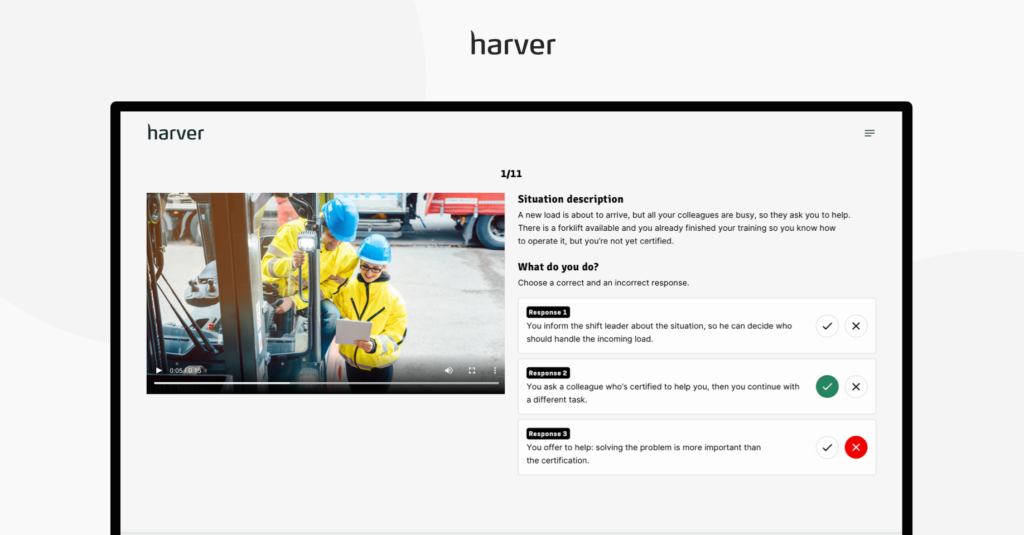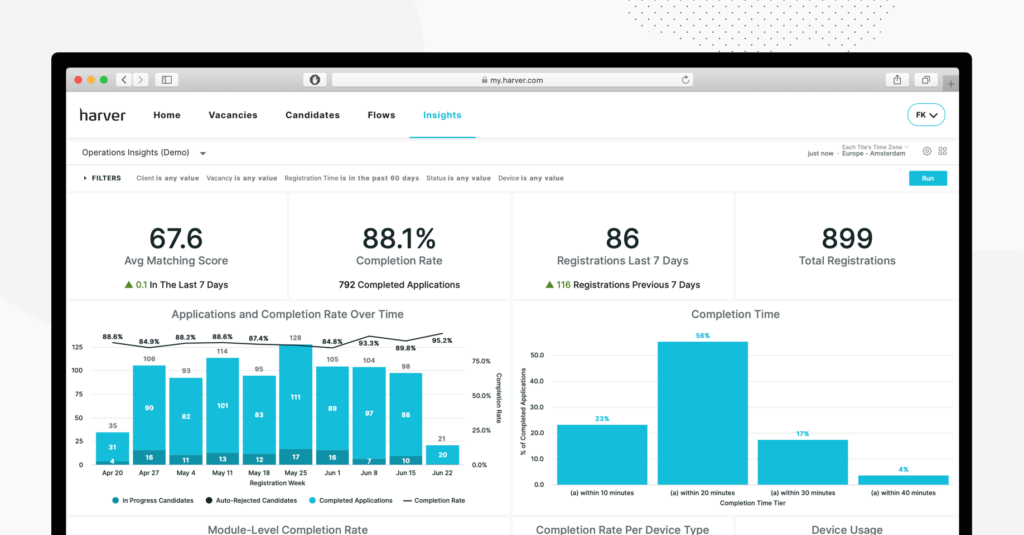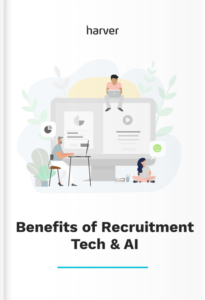Tech-driven solutions are there to make our lives as recruiters easier. They help automate mundane or repetitive tasks, streamline hiring processes, and help us stay in touch with candidates more efficiently. But even with so many benefits, some logistics recruiters are slow to implement technology, because they fear they’ll lose their autonomy and the human element of the hiring process.
If you’re in this group and still struggling to see where tech can help make your processes more efficient, we’re here to help. Let’s walk through some of the challenges that come with traditional, manual recruitment and how you can implement tech-driven solutions to improve hiring efficiency.
What’s in?
Like what you see?
Don’t miss out. Subscribe to our quarterly digest to get the latest TA and TM resources delivered right to your inbox.
Challenges with traditional recruitment
As a logistics recruiter, you probably already know what the manual process looks like. Candidates submit their resumes, you scan through to see which match the job description, and you send an email or make a phone call to set up an interview.
You then need to go through the back-and-forth process of finding the right time to talk, and when the interview is done, you need to manually manage candidate portfolios in a spreadsheet or notes app.
Just talking about the process can seem overwhelming. There are a lot of steps, and when you have hundreds of applicants to sift through, you’re left spending a lot of time just reading resumes and replying to emails.
But moving away from manual processes can be tricky. Teams are so used to the way they’ve always done things that switching up processes can feel like it’s just not worth it, but as candidates’ and new recruiters’ expectations change, teams that refuse to update will get left behind.
This is where recruitment software comes in to help — 94% of recruiters and hiring professionals say that using recruitment software has positively impacted their hiring process.
Implementing recruitment software can create a more positive experience for both the candidate and the recruiter. On the recruiter’s side, they can streamline the annoying tasks that eat away most of their day so they can focus on more fulfilling tasks. For candidates, they get to have a better experience while applying and interviewing, increasing the chances that they’ll want to work with you.
Let’s explore some specific ways tech-driven solutions can improve your logistics recruitment.
How AI & recruitment technology is changing recruiting experience
Find out how tech has helped other companies grow by enhancing both the recruiters’ and candidates’ experience!
How to improve process efficiency in logistics recruitment
Adding technology for the sake of adding technology doesn’t help anyone. When you’re implementing new tech-driven solutions, you need to understand exactly why you’re adding these new processes and systems in place.
So, how exactly can you create a more efficient logistics recruitment process with technology? Here are a few ideas:
1. Use programmatic job advertising to source top candidates
Programmatic job advertising is the purchasing, publishing, and optimizing of job ads by electronic software, not regular people. Think of it like a typical ad you see when browsing the web.
Programmatic job advertising uses browsing data from your ideal job seekers to get the right job advertisement in front of them. This brings the job listing to the candidate rather than just posting the opening on a job board and hoping your ideal candidate finds it.
This type of advertising can help you reach new prospects that might not be actively looking for a new job, or might otherwise miss the vacancy you’ve listed on a job board. You can get super specific about who your target candidate is, increasing the chances of you landing high-quality applicants, and makes it easy for job seekers to find positions that match their qualifications and needs.
If you’re running ads for multiple open positions, programmatic job advertising can rotate ads based on the number of applicants. If a certain position is not getting a lot of attention, it can automatically start prioritizing that job advertisement to drive more applicants.
Programmatic job advertising can also save you money. Because you’re targeting your ads to individuals who are most qualified for the job, you’ll have a high ROI. You can pay per click, so you will only be charged when a candidate engages with your ad.
When you have better job ads, you get better applicants. And when you’re working with better applicants from the very beginning of hiring, the entire process can run more smoothly.
2. Use assessments to select candidates
Anytime you’re reviewing applications manually, you’re going to run into some element of bias. It’s nearly impossible for humans to completely rid themselves of biases, even if your team is taking all the appropriate steps to combat it.
You can get around these biases by using pre-employment assessments. Assessments allow you to choose candidates based on the skills and characteristics they have, not things like where they went to school or where they are from. Using assessments ensures you’re moving those who are best qualified for the job onto the next round of the hiring process.
One of the most common kinds of assessments is a situational judgment test (SJT). SJTs offer realistic job previews to candidates, giving them an opportunity to see what day-to-day looks like on the job.

Not only does this give you an accurate look at if the candidate is qualified for the position, but it also gives them a sneak peek into what their job would look like if they are hired. If they find that they didn’t enjoy the SJT, they can withdraw from the hiring process.
Assessments also help streamline the hiring process by automating some of the steps. Instead of needing to review results manually, you can set up the assessment system to automatically push forward candidates who score above a certain threshold.

You can also customize the assessments for the job you’re hiring for. When hiring in logistics, you might want to consider assessing candidates based on their ability to multitask, their attention to detail, or their communication and teamwork skills. You can also assess physical skills. You can add or remove assessments depending on the unique requirements of each position.
We’ve detailed the topic of pre-employment assessments for the logistic industry in the article below.
Assessments also create a better experience for the candidate. Nothing is more frustrating than engaging with a recruiter, just to never hear back from them about the role. With assessments, you can send automatic rejections or updates to candidates based on their scores. Candidates are kept in the loop, so they know exactly where they stand in the hiring process.
Stop guessing,
Start data-driven hiring.
Learn how you implement a modern candidate selection process, that is: streamlined, experience-driven and backed by data.

3. Automate interview scheduling
You’ve found a great candidate you’re ready to talk to. You send them an email or give them a call, and instead of nailing down a date and time to talk, you’re trapped in a back-and-forth of checking availability and struggling to find a time that matches both of your schedules. Multiply this by the number of candidates you want to interview, and you are wasting a lot of time just trying to get interviews scheduled.
A drawn-out hiring process could mean losing a top candidate. If they’re interviewing with multiple companies and a competitor’s hiring process is more efficient, the candidate might receive an offer before their first interview with you is even scheduled.
To eliminate the back-and-forth and improve scheduling efficiency, you can automate the process. Automating interview scheduling lets candidates select a date and time that works with their schedule without needing to communicate with you.

Scheduling automation is particularly useful when you’re doing volume hiring. When all you have to do is send a candidate a link to your availability, you can schedule more interviews and still focus on the recruiting tasks that most need your attention.
Automating your scheduling process also comes in handy when you have multiple team members who need to participate. Artificial intelligence can help find times that work for all parties, eliminating the need to check multiple calendars.
For the candidate, it can take some pressure out of scheduling. They have the flexibility to choose the time that works best for them without feeling pressured to make the time provided to their work, and if something comes up that requires them to reschedule, they can easily do so without needing to reach back out to the hiring manager.
4. Centralize data collection and analysis
Recruitment, like most of the business world, is turning to data to drive decision-making. Tracking, measuring and analyzing candidate and employee information can help you better understand your recruitment process so you can tweak and fine-tune each step to lead to better outcomes.
Data and analytics can improve your hiring process in a few different ways. First, it makes the process more efficient. It lets you see if there are any bottlenecks in your current process, or if there are any areas where candidates might be getting lost. Where you see areas that the process is not flowing smoothly, you can introduce changes to streamline the flow.

Data can also help you connect and hire better candidates. For example, you can find where your best candidates are coming from, such as what ads or job boards they’re finding you from, and start prioritizing those pathways. This can lead to stronger candidates in the future.
Using data and analytics is also a great way to improve diversity. Tracking diversity initiatives over time lets you see what is working, what isn’t, and where you still need to improve. You can track demographics through your hiring funnel to see if there is bias in your recruitment process and take the appropriate steps to adjust.
We’ve detailed the topic of D&I metrics in the article below.
Finally, data makes future forecasting easier. You can use analytics to anticipate talent and skill gaps before they become a problem, so you can start the hiring process early. Since analytics can also help you track costs, time to hire, and hiring frequency, you can plan for budget and time to ensure someone is in the position by the time you need them.
Introducing tech to your logistics recruitment process
Using tech-driven solutions in your logistics recruitment process can make your job a whole lot easier. With help getting top-quality candidates to apply to your job, scheduling interviews, assessing skills, and collecting data, you can get the right candidates in the right roles in a more efficient way.
If you’d like to see how Harver helps logistics companies streamline their process and digitize recruitment, you can book a demo below.
Ready to transform your hiring process?



